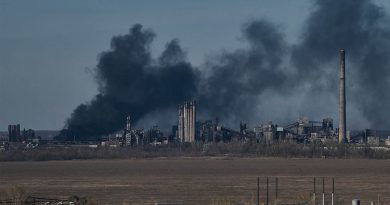Avalanche search teams experience "stress injury" over time
The memory of a rescue mission a decade ago still haunts Charles Pitman. Recalling the image of a father and uncle praying on a mountainside for a boy of 10 or 11 while rescuers performed CPR on him, Pitman paused to gather himself, tears in his eyes.
It was one of Pitman’s first missions with the Summit County Rescue Group. A family had been snowmobiling on Vail Pass, only a mile or two from where Pitman stood as he described that tragic day. The boy had accidentally run the snowmobile he was driving into a tree. In a blinding snowstorm at 11,500 feet, nurses who happened on the scene while skiing performed CPR, but it soon became clear there was no point in continuing.
“You can see, it’s been years, probably ten, twelve years ago,” Pitman said. “That’s how hard it was. I’ve dealt with a lot of fatalities. That sort of comes with the nature of what we do. But I think the fact that it was a child is what really, really hit hard.”
Witnessing the aftermath of trauma, death and the grief experienced by next of kin is something search-and-rescue teams have to deal with, whether the cause is accidents, avalanche fatalities or missing hikers in the summer. Pitman spoke after members of Colorado’s search and rescue community conducted a media event and training scenario Thursday on Vail Pass to demonstrate how they respond when victims get caught in avalanches.
Mountain search-and-rescue teams, which are made up of volunteers, conduct similar training operations regularly. Dale Atkins, a rescue team member since 1974 who also spent 19 years as a forecaster for the Colorado Avalanche Information Center, said most train in the field at least two weekend days a month, along with two or three mid-week classroom sessions.
But the reality is, no matter how fast they get to the scene or how well-organized their search is, they’re usually too late to save a victim buried in an avalanche.
“We’re most likely going to find a body, and it’s a recovery,” said Atkins, who serves with the Alpine Rescue Team that covers Clear Creek, Jefferson and Gilpin counties. “We have that in the back of our minds. While we’re searching, there’s always that hope that we’ll be proved wrong and we’re going to find somebody alive. The sad reality is we seldom find people alive.”
Most members of mountain search-and-rescue teams can’t help but identify with victims because they also are avid backcountry skiers, snowboarders or snowmobilers in their free time. They regularly make risk assessments when they are recreating in the backcountry, just as their victims did before the snow slid.
“All of us in search-and-rescue, we love doing these same things,” Atkins said. “Every accident, every rescue has an effect on us. We have our ways of dealing with it. Often it’s in discussion with our friends on the team, because we have these shared experiences, but they can build up over time. I think all rescue groups have lost some good members who quit the team too soon, so to speak, because of some of the experiences they’ve had in dealing with the deceased.”
Colorado has had 11 avalanche fatalities with a month and a half left in this season, one short of the record set in 1993, which is why representatives of multiple rescue teams, county sheriff departments, the avalanche information center and the Colorado Search and Rescue Association were made available to the media at the Vail Pass exercise.
“It’s been a pretty historically bad year in terms of snowpack conditions and fatal avalanche accidents,” said Brian Lazar, deputy director of the avalanche information center. “We’re starting to turn the tide a little bit in terms of snowpack conditions. The recent dry, really warm weather has helped to heal some of our really problematic weak layers, but we are by no means out of the woods yet. The storm that is coming (this weekend) has the potential to drop enough snow and create enough of a load to wake up those deeper weak layers and create much bigger and more destructive avalanches. Avalanche danger is going to ramp up.”
In the training scenario, Pitman played the role of mission coordinator. The exercise began with him questioning a teammate from the Summit County Rescue Group who was posing as the “reporting party” — the term rescuers use for people who are with avalanche victims when they are caught — in the mock avalanche scenario.
“I need to get as much information from you as I can, so they know what they’re looking for,” Pitman told the reporting party played by Travis Sirek, a colleague with the Summit County Rescue Group. “Help me out here. How many people, and what were you doing? Do you know about where they were caught?”
Pitman asked what those missing were wearing, and whether they were wearing avalanche transceivers. He explained what was happening as the search commenced. Sirek asked if he could actively assist in the search because the victims were his friends.
“I understand, and I know how traumatic it is right now,” Pitman said. “But trust me, we’re going to do everything possible to find them as quickly as possible.”
Sensors and avalanche dogs were used in the search. “Probe lines” of searchers sunk 10-foot poles into the debris field, poking the snow for signs of victims. Radios crackled as rescue personnel tried to make the scenario look and sound as realistic as possible.
“Two victims found, both deceased,” came one radio update. And later, “Be advised, coroner has been notified, victims advocates are en route.”
Laura McGladrey was at the scene representing the Responder Alliance, an organization that helps people who work in search and rescue, law enforcement, firefighting, nursing and others exposed regularly to scenes of trauma and death to assist them in processing what they have experienced.
“When they say 500,000 COVID deaths, I think, ‘500,000 nurses had to watch someone die,’ and we have to take care of them,” said McGladrey, a psychiatric nurse practitioner who works at the Stress, Trauma, Adversity Research and Training (START) Center at the University of Colorado’s Anschutz Medical Campus.
She also has two decades of experience in mountain rescue. She recently worked with the Eldora Ski Patrol after there were two fatalities on its slopes in as many days. She said the effects of witnessing trauma and death on rescuers accumulate over time like snow building on a slope until an avalanche results, a breaking point when rescuers experience emotional “stress injury.” Talking to next of kin, she said, is more “impactful” on them than finding bodies.
“Watching the wife with the kids, that’s when it gets into our fabric,” McGladrey said. “It is those contacts that stay with rescuers for years and years. When I ask rescuers what are the two events that stand out to you over your entire rescue career, it almost always involves, ‘There is a family, and I just couldn’t do anything about it.’ ”
Subscribe to our weekly newsletter, The Adventurist, to get outdoors news sent straight to your inbox.
Source: Read Full Article











